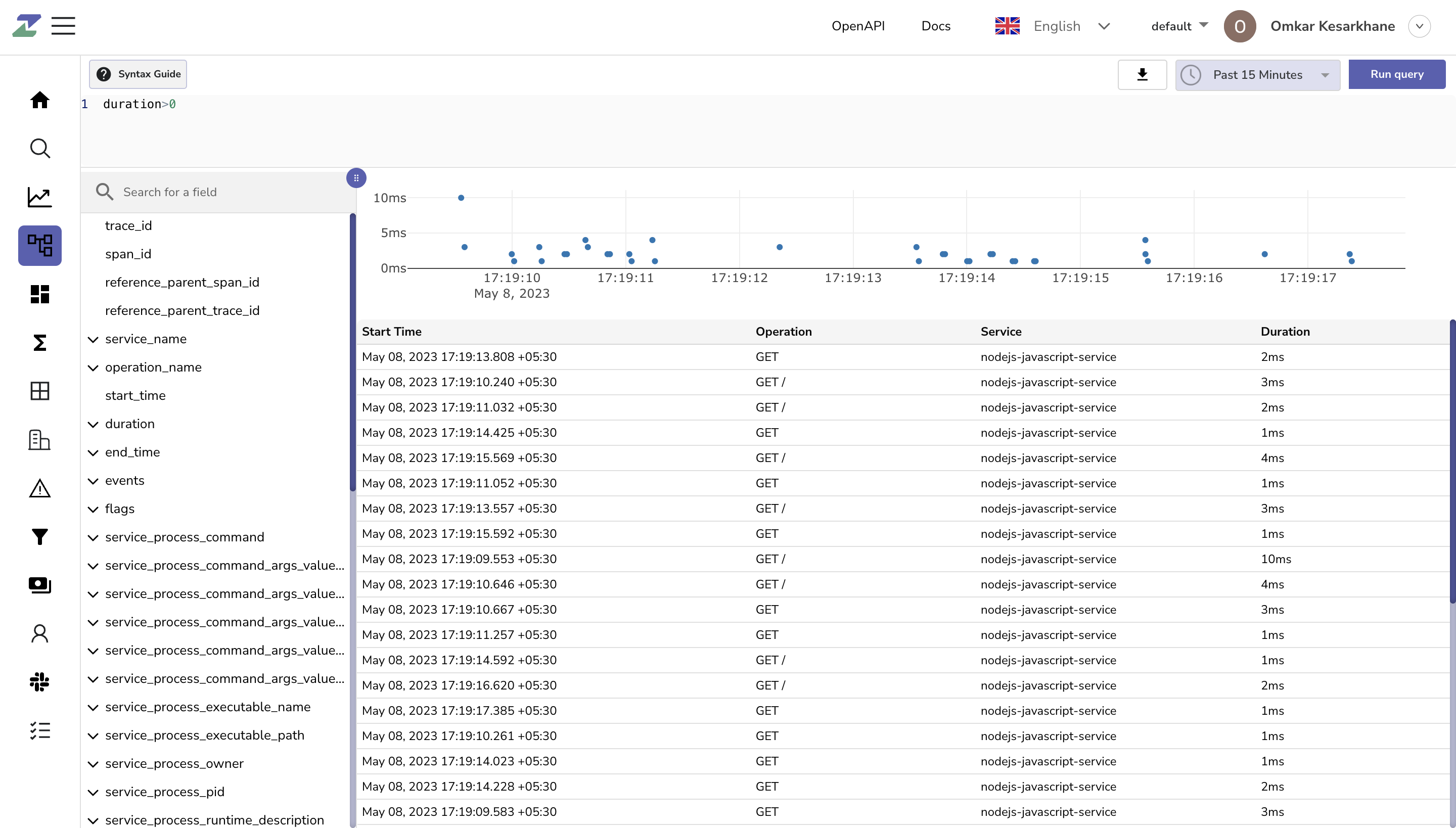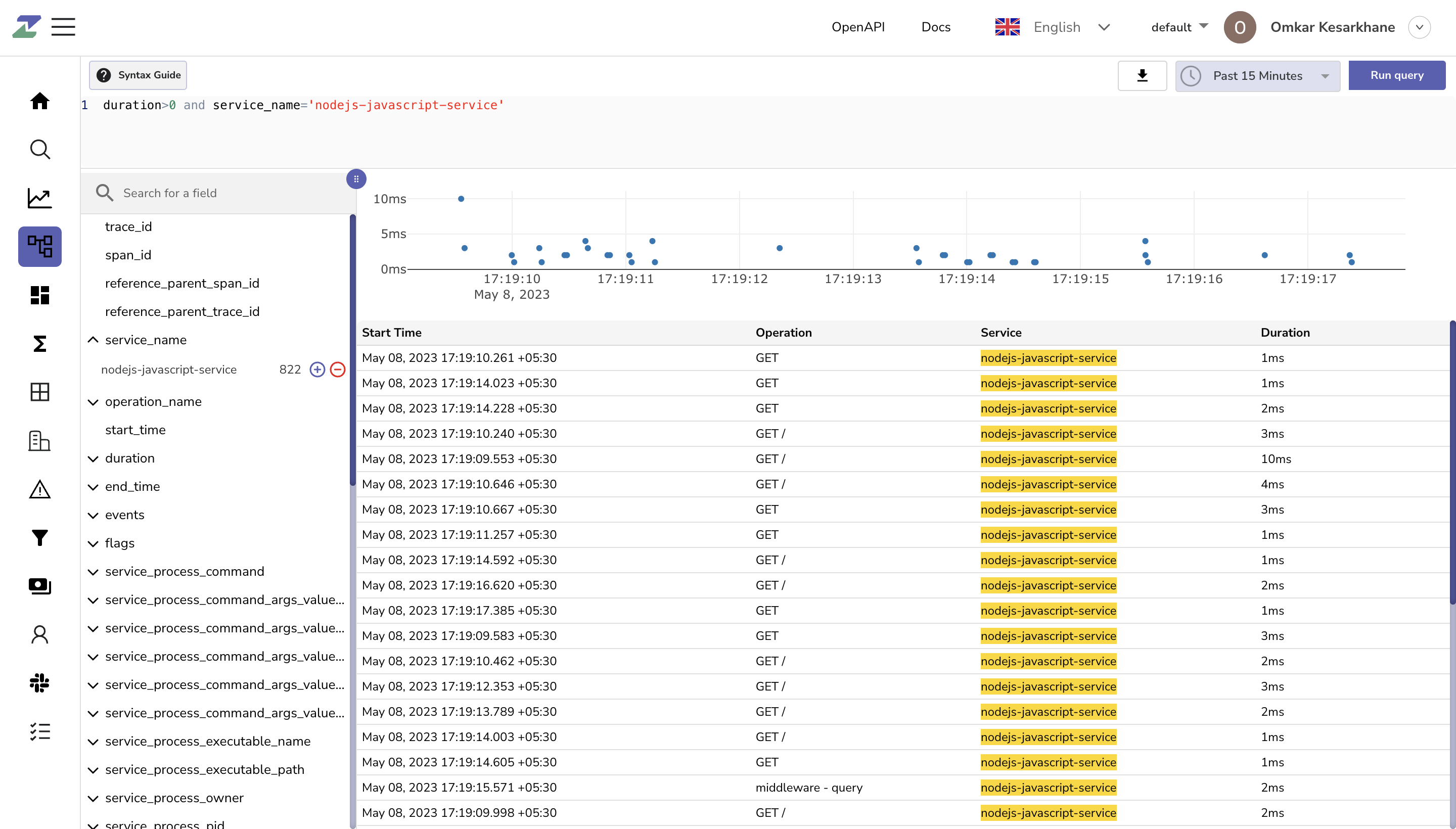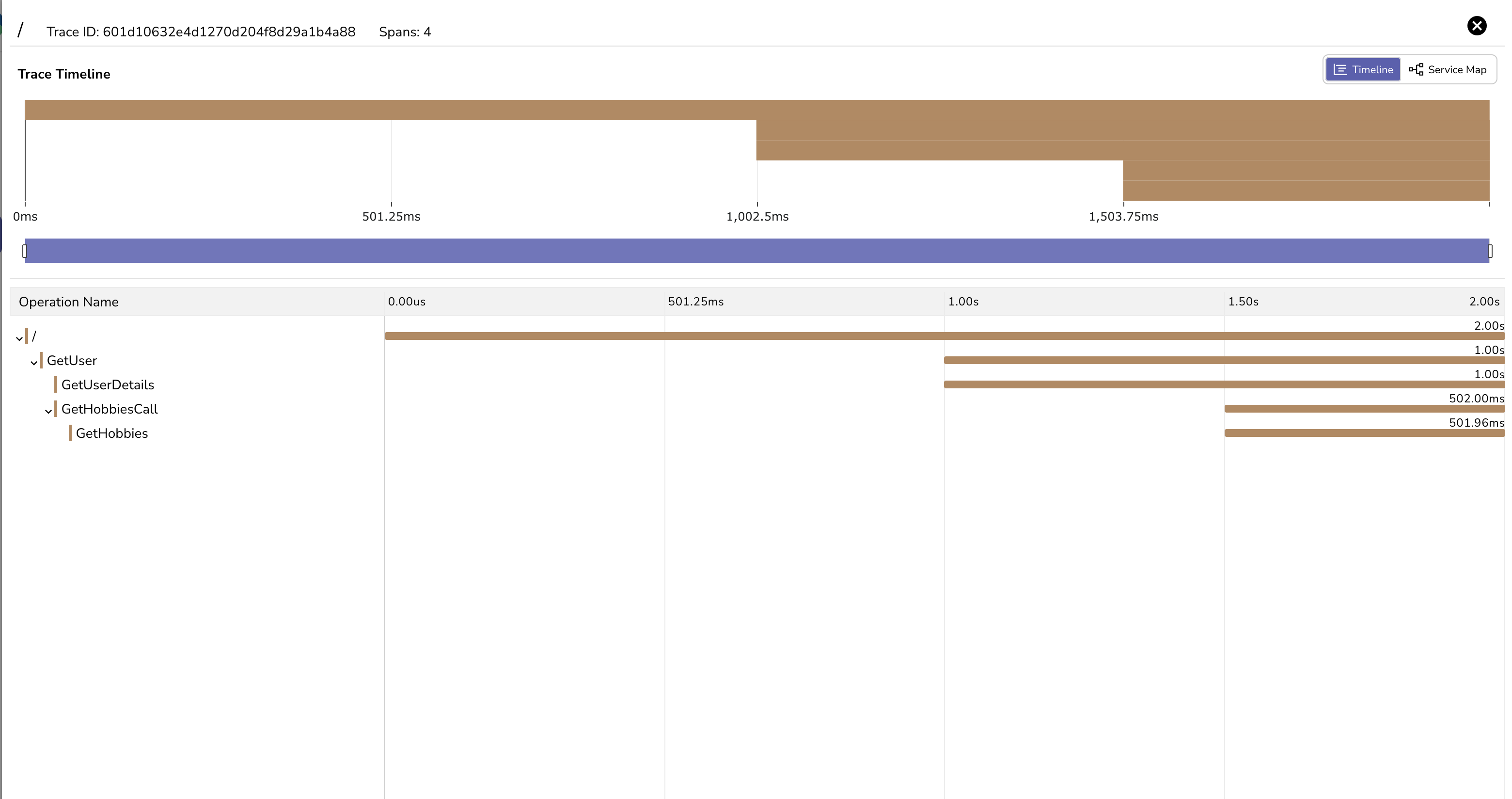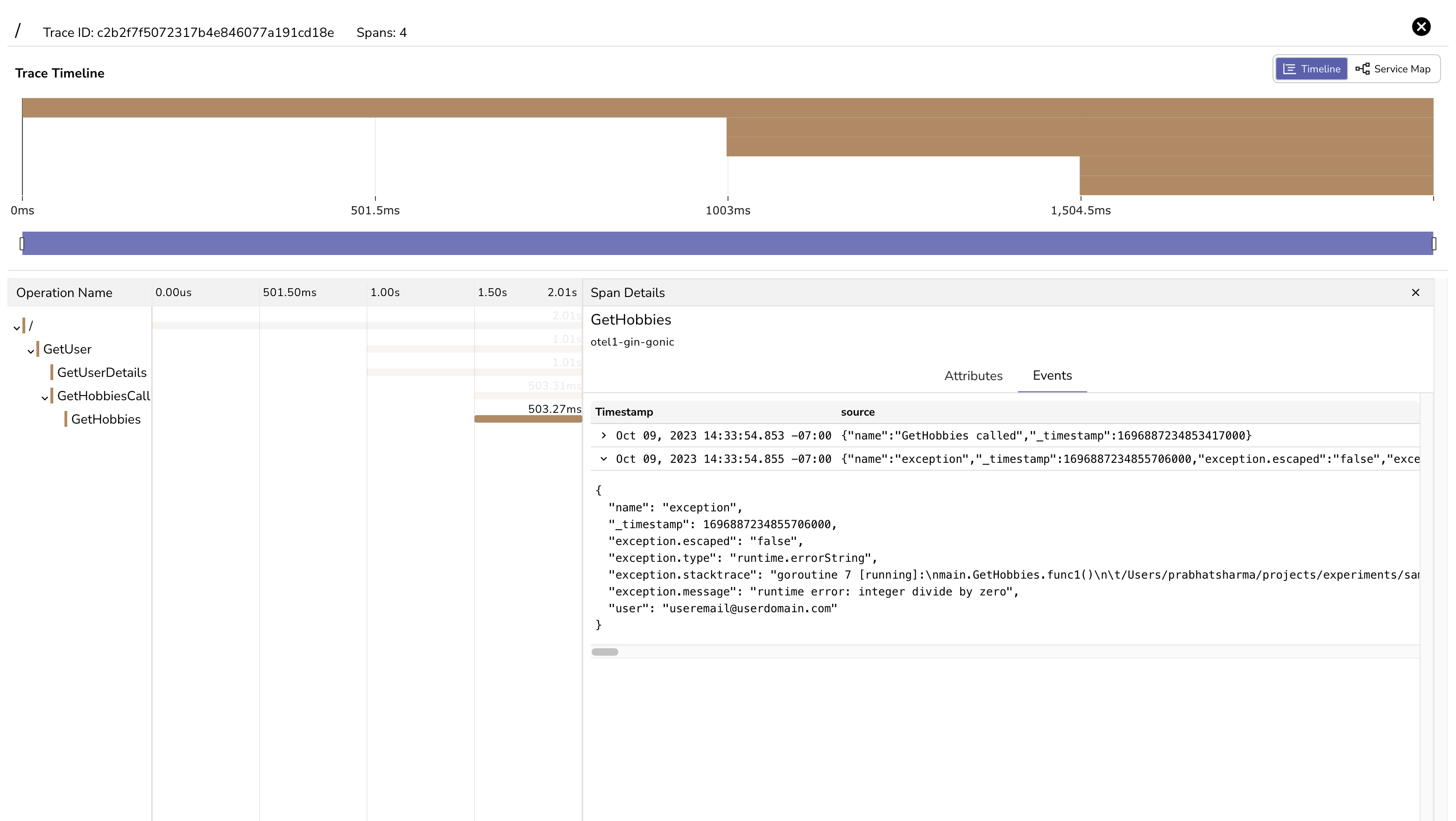Javascript NodeJS
You can setup tracing for your Node.js application. Check sample configuration on how to setup traces.
Clone
If you don't have node.js installed, please install it and then follow below steps.
Open tracing.js file from that repository. and make changes to the highlighted lines below
Setup up credentials
You will get url and Authorization key here http://cloud.openobserve.ai/ingestion/traces/
Replace the url and Authorization key in the tracing.js file
Setup Service/Application
Run commands
The server is now running on 8080, navigate to http://localhost:8080 Refresh page couple of times to get more traces exported.

Traces are captured, you can check these captured traces here https://cloud.openobserve.ai/traces

Filter traces with your service name nodejs-javascript-service

Click on any trace to check trace data

Trace can have multiple spans, each span represents single operation or task within that trace. Click on any span to check span details.
